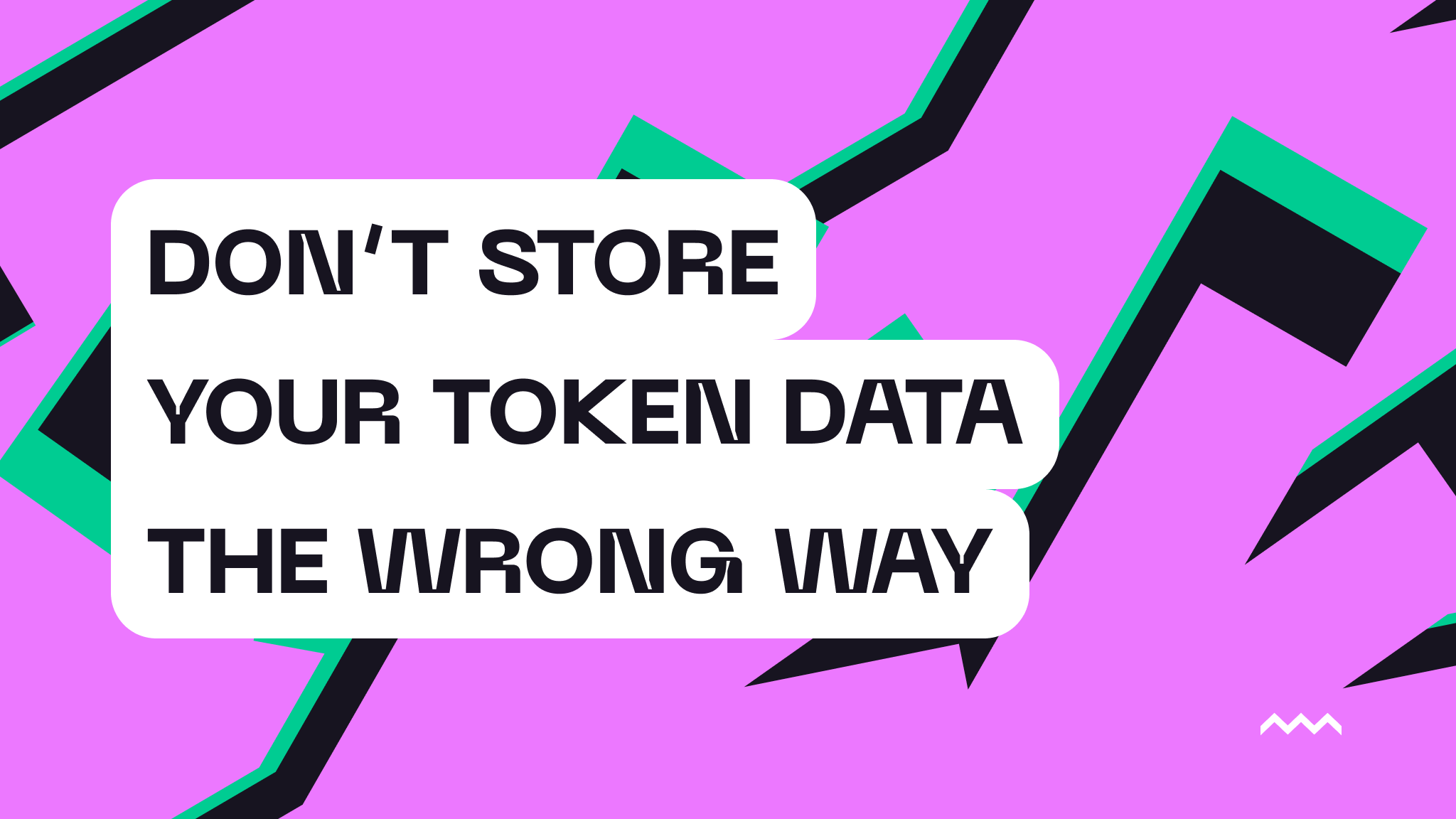Back to blog

Don’t Store Your Token Data the Wrong Way
The Blockchain Revolution Isn’t Complete Yet
We did something extraordinary with blockchains: we made transactions verifiable. Every line of code, every token movement, every onchain interaction carries cryptographic certainty. It’s the reason so many engineers fell in love with this technology in the first place. We removed trust from the equation.
But somewhere between that purity of design and today’s production systems, we introduced a blind spot.
We still store token-related files, images, metadata, certificates, AI weights, proofs, on systems that aren’t verifiable at all. We use mutable storage systems like AWS S3, wrap them in layers of permissions, and call it a day.
In doing so, we’ve built systems that are only half cryptographic. The onchain data is trustless, but the offchain files depend on the good faith of whoever is managing the bucket.
That’s the hidden cost of storing token data the wrong way.
The Weak Link in Modern Blockchain Systems
You probably already know the dangers of data drift, when two systems think they’re referencing the same file, but over time, that file gets edited, replaced, or corrupted. Now imagine that happening to your token data across exchanges, marketplaces, indexers, wallets, etc.
When a token points to a file hosted on S3, there’s no cryptographic link between the token and that file. Anyone with the right permissions can change the contents without the token ever noticing. It’s the digital equivalent of replacing the deed to a house after the sale is final.
This isn’t a theoretical problem. It’s happening quietly across Web3 today. NFT metadata gets “updated.” Token-bound media disappears. Smart contracts reference URLs that eventually break.
And that’s because we’re still thinking about storage as a location instead of a verification layer.
IPFS: The Cryptographic File Layer
The InterPlanetary File System (IPFS) isn’t just decentralized storage. It’s a protocol for verifiable file transfer, a way to ensure that when two parties reference the same file, they are referencing exactly the same content.
It does this through Content Identifiers (CIDs) — cryptographic fingerprints derived from the contents of a file. Change even a single byte, and the CID changes entirely. That means a CID doesn’t just point to data, it proves what that data is supposed to be.
When you reference a file by its CID, you eliminate the “telephone game” of data drift. You no longer have to trust a storage provider or a developer to serve the right version. The data itself guarantees its authenticity.
In other words:
Blockchains made transactions verifiable. IPFS makes data verifiable.
And that’s the missing piece of the blockchain stack.
The Problem With “Decentralized Storage” Thinking
Here’s where many teams go wrong: they hear “IPFS” and think “decentralized storage.” They imagine redundancy, nodes, and peer-to-peer hosting, all true, but missing the point.
The real power of IPFS isn’t where the file is stored; it’s how it’s verified.
Engineers should think of IPFS not as an alternative to S3, but as the cryptographic namespace for data, a way to bind offchain files to onchain truth. It’s a system design choice, not an infrastructure choice.
Whether your files live in a data center, on a CDN, or pinned in multiple regions doesn’t matter. What matters is that the files are addressed, referenced, and verified by CIDs. That’s what ensures every consumer, every validator, and every smart contract is operating on the same ground truth.
The Systems Design Argument
Let’s talk architecture.
Every blockchain system is really two systems:
- The onchain layer, which manages state and consensus.
- The offchain layer, which handles data and context.
Most engineering teams have hardened the first layer but left the second soft. They rely on mutable URLs, centralized endpoints, and opaque storage permissions, all things that break determinism.
When you add IPFS and CIDs into your system design, you’re introducing deterministic references for every file that touches your tokens. You can version, verify, and validate content across distributed systems without ever wondering what changed.
For engineers, that’s the holy grail: deterministic, verifiable data exchange.
And for the companies building the future of digital ownership, it’s the difference between a temporary stack and a permanent architecture.
Future-Proofing Token Data
As more data becomes tokenized, documents, identities, AI models, media, the world will need a universal way to verify files without intermediaries.
That’s what IPFS already provides. It’s quietly become the standard for token-bound data, used by every major blockchain ecosystem. Pinata builds on that standard, ensuring that enterprise teams can rely on it for real production workloads.
When you store token data through Pinata, you’re not just storing files. You’re anchoring your offchain data in the same cryptographic foundation as your onchain logic. You’re making your system future-proof, ready for a world where every transaction, every model, every piece of data must be verifiable by design.
The Hidden Cost, Revealed
The cost of storing token data the wrong way isn’t measured in bandwidth or storage fees. It’s measured in lost integrity.
When your files can change without notice, your tokens lose meaning. When your metadata can drift, your systems lose trust. When your offchain data isn’t verifiable, your blockchain becomes an illusion.
But it doesn’t have to be that way.
With Pinata and IPFS, we have the tools to make our data as verifiable as our transactions, to complete the promise of the blockchain.
The future of Web3 will not be defined by decentralization alone. It will be defined by systems that are verifiable by design.
Why Pinata Exists
At Pinata, we built the infrastructure that makes this practical at enterprise scale.
We take the cryptographic guarantees of IPFS and wrap them in performance, security, and simplicity. You can use Pinata as the foundation for any system that needs to attach verifiable files to tokens, from NFT marketplaces to enterprise supply chains to AI provenance systems.
We handle the scalability, uptime, and API performance you expect from cloud storage, but everything you interact with is still content-addressed. Every CID you store through Pinata carries the same cryptographic integrity as the blockchain itself.
In other words:
Pinata gives your offchain data the same trustless guarantees as your onchain assets.
That’s what we mean by future-proofing your onchain systems.

